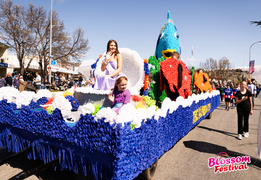TVCB updated on Lake Onslow battery option
Tracie Barrett
08 September 2023, 5:45 PM
 Enlarging Lake Onslow to become a battery of stored potential hydro energy is one of two final options being looked at by the New Zealand Battery Project. PHOTO: The Central App
Enlarging Lake Onslow to become a battery of stored potential hydro energy is one of two final options being looked at by the New Zealand Battery Project. PHOTO: The Central AppThe Teviot Valley Community Board was given an update on the MBIE New Zealand Battery Project, particularly as it applies to the $16 billion Lake Onslow option, at its meeting on Thursday (August 7).
The Ministry of Business, Innovation and Employment has been investigating a pumped hydro scheme and alternative technologies to address the country’s dry year electricity problem, in which existing hydro-power schemes do not get enough rainfall or snowmelt to supply power demands.
One option would see water stored in an enlarged Lake Onslow for use in such cases.
Project programme director John Doorbar and staff led the board through the status of the project, with a lot of the information having been presented to the community at meetings held last October.
“This process focuses on Lake Onslow but the New Zealand Battery Project is looking much wider than just Lake Onslow,” John said.
MBIE energy and resource markets policy director Susan Hall said the timing of the next steps would be dependent on the outcome of the general election in October and what the incoming government chose to focus on.
“Broadly, if the project is going ahead, the next phase will be to complete a detailed business case which will identify the preferred option for addressing the dry year problem.”
That process would lead to a final investment decision, and then to implementation of the preferred choice, if there is one. There was a question of whether the Crown should make such an investment, she said.
“The indicative business case recognises that Lake Onslow would be a very costly option for New Zealand, costing in the region of $16 billion based on the work we have done to date, and there would be significant local environmental, social and cultural impacts of building a pumped hydro scheme at Lake Onslow.
“Is keeping our reliance on fossil fuels actually a better option for New Zealand than going to a renewable dry year solution?”
Asked by the board if solar or wind power were options, Susan said the problem with both of those was their intermittent nature.
“The dry year problem is a deep and profound problem,” she said. “What it can mean is that up to 10 per cent of New Zealand’s annual electricity demand won’t be able to be serviced for a period of weeks to months.”
Cabinet had agreed in July not to advance two other options: a similar pumped-hydro scheme on the upper Moawhango River, and a green hydrogen scheme. A multi-technology solution, or portfolio approach, continued to be investigated.
Any final decision was expected to take three to four years, with another seven to 10 years until full operation, Susan said.
Whatever happened at the general election, the board would be given an update, and further information could be found on the MBIE website page.
The board accepted the report with thanks to the NZ Battery team.






